Going back a decade or so, your clinic could rely on outdoor advertising and word-of-mouth to secure a steady supply of patients. It was sufficient to do your duty and fulfil your patients’ expectations. Today, the story is different: your clinic needs to be not only but good, but well-known too.
The sheer variety of advertising channels out there is enough to make your head spin. That’s before you’ve even had the chance to work out which channels are most effective! Let’s take a look at which patient acquisition channels are worth using for your clinic.

How to Promote Your Clinic – Starting Strategy
The first step of promoting any business regardless of industry is to develop a marketing strategy. Having a roadmap allows you to predict the effectiveness of different advertising channels and understand which ones are worth trying from the beginning, which should be used later, and which should not be used at all.
To prepare your marketing strategy, you will need to accomplish the following:
- Define realistic, quantifiable goals, i.e. those that can be measured, such as to increase the average revenue per appointment by 20% over 6 months;
- Segment your target audience and describe the typical patient for each segment;
- Analyse your competitors, both their strengths and weaknesses;
- Carry out an audit of your current website (if you have one);
- Describe your clinic’s unique selling point (USP);
- Work on a description of your services;
- Carry out an assessment of your clinic’s online reputation;
- Limit your promotional activity to a particular geography/locality;
- Define your advertising channels;
- Formulate a sales plan, and
- Outline key performance indicators (KPI) for each advertising channel.
This list may change somewhat depending on your objectives and what your clinic can provide its patients. In any case, developing a strategy takes a lot of time. Even if you are just planning to open a clinic, you should still jot down some ideas for each point although you may not want to delve too deeply to start with. Analyse your 5 closest competitors and get to grips with 4-5 of the most popular advertising tools for now. You’ll always be able to add to them later.
You can organise and analyse indicators with the help of the right practice management software. Make sure that your colleagues add information about their workload and the services they have rendered in a timely fashion. With this information to hand, you will be able to examine a full range of statistics on your clinic’s activities. You can use this as the basis for your new marketing strategy or to tweak your existing approach.

Don’t Neglect Your Clinic Website
Your website is arguably the main tool you have in your arsenal to attract patients to your clinic. An estimated 7 percent of Google’s daily searches are health-related, according to Google Health Vice President David Feinberg, MD, The Telegraph reports. Google’s total daily health-related searches amount to 70,000 each minute, according to the report. Of these, 16% were direct searches for medical clinics and doctors, with 5% and 6% of queries being for procedures and diagnostic tests respectively. There’s absolutely no reason to believe that this volume is going to do anything but increase over time.
Let’s take a look at what your clinic’s website must have:
- Modern, user-friendly design
- Well-designed homepage
- Clearly understandable and useful content
- Flexible and reliable content management software (CMS)
- Mobile version
- Search engine optimised (SEO)
Think of your website as your online reception desk. It’s the very first thing a visitor will see so it’s vital that you communicate what you are great at and what your existing patients love about your clinic. You could remark on anything from your convenience and politeness to your individualised and professional approach.
Promoting Your Clinic on Search Engines
Search engine optimisation (SEO) is one of the most effective advertising channels in healthcare and the most suitable for long-term strategies. Unlike context ads, SEO does not generate interest immediately but it does give you a steady stream of visitors to your site even if you halt your promotional activities for whatever reason.
To start with, you’ll need a semantic core, a list of keywords that people will use to find your site and navigate its pages. You can choose keywords like [medical service] + [town/city] or [medical speciality] + [city] as well as secondary keywords such as symptoms of a disease. For example, [symptom] + “treat”, [disease] + “treat”. The point is that people don’t always know what kind of doctor can solve their problems. If they do happen to know, then they usually search for the name of a clinic or doctor.
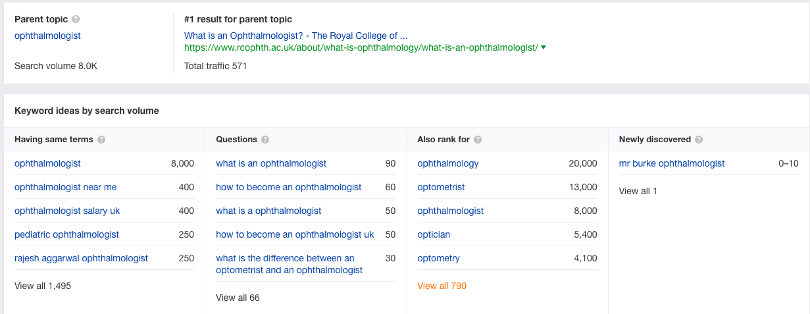
It would be a good idea to utilise queries from visitors at different stages of the sales funnel. You can attract warm leads to pages that use commercial (“price”, “cost”, “cheap”, etc.) and transactional words (those that indicate the visitors intent to purchase or order). You will attract those people who have a problem but are not ready to book an appointment by providing the information they are looking for. In short, the content of each web page should be different, depending on the particular segment of your target audience that you are trying to attract.
For commercial queries
These web pages should contain exhaustive information about your services, quality guarantee, patient reviews, contact details, online booking and callback request forms.
For transactional queries
Here you must display your prices and ideally they should be competitive. You should also include detailed descriptions, guarantees of your quality of care, patient reviews, online booking forms, step-by-step guides to booking and treatment, your address and travel directions.
For knowledge-seeking queries
These pages should contain expertly written materials with clearly stated sources and reliable quantitative data, all laid out in a way that is easy to understand for any visitor. The text should not contain any aggressive calls to action.
In order to select the keywords for each page of your website, you need to start with the following typical phrases:
- Names of services, e.g. “teeth whitening”, “pelvic ultrasound”, etc.
- Names of services and geographic location, e.g. “braces” + “Birmingham” or “slipped disc treatment” + “Manchester”
- Medical specialities and geographic location, e.g. “orthopaedics” + “London”
- Synonyms and similar phrases, e.g. “GP clinic”, “GP surgery”, “General Practice”, etc.
- Names of services/medical specialities and types of services, e.g. “dentistry for children” or “rhinoplasty for men”
- Knowledge-seeking queries, e.g. “how to choose a psychologist”, “how to treat scoliosis”, “ways to treat an overbite”
For any business, SEO involves a multitude of activities that include websites, webmasters and third-party platforms. As such all of the above is crucial to the growth of your business. However, there is a distinction to be made between promoting a clinic with SEO and doing so in other fields. In healthcare, you must make sure that you follow a stricter set of rules when you decide how to advertise, whether those rules be moral or legislative in nature.
The demands that different search engines place on websites may vary but let’s first focus on Google as the runaway market leader at this point in time. Google pays attention to the overall quality of sites, links and how well the purpose of a given page (page intent) matches the intent of a visitor. For example, if a page is optimised for a commercial query, the visitor expects to see commercial information there, i.e. pricing, conditions of purchase and so on.

Other search engines place more weight on the quality of your content and the extent to which it answers the visitor’s queries, including the structure of the content as well as commercial factors. As it applies to your clinic’s website, this means price lists, online booking forms, callback request forms, photos and descriptions of your clinic team members.
Writing a Blog for Your Clinic Website
If you analyse the sites of your most successful competitors, you will probably have noticed that most of them have a section for written articles. There’s a good reason for this.
Having a blog on your site performs many functions, the most crucial of which are:
- Widening your funnel — articles will respond to knowledge-seeking queries and attract the corresponding visitors who are not yet prepared to make a booking but do want answers to their problems which you can solve
- Improving the brand awareness and visibility of your clinic
- Increasing your patient list
- Boosting your expertise in the eyes of your patients (existing and potential)
- Raising awareness of new technology, medical materials and services
- Helping patients to make decisions
Your clinic’s blog will be effective if you comply with the following important conditions:
- When researching for articles, gather search queries that are linked to the service your clinic provides. It’s not worth writing articles on “how to whiten your teeth at home” or “how to remove warts with vinegar” and suchlike.
- Don’t write articles on equipment and technology that you don’t use or on services you don’t provide. If you do so, you run the risk of losing the trust of existing patients as they will start to view your content as untrustworthy.
- Add links to commercial sections of your website if they relate to the topic of the article.
To ensure that healthcare and medical articles increase the reader’s trust in your clinic, you need to attract a well-known specialist to write for you. You could ask a doctor from your clinic to put something together and then send it to an editor for improvements. Alternatively, you could hire a copywriter and then ask one of your doctors to critique the final result.
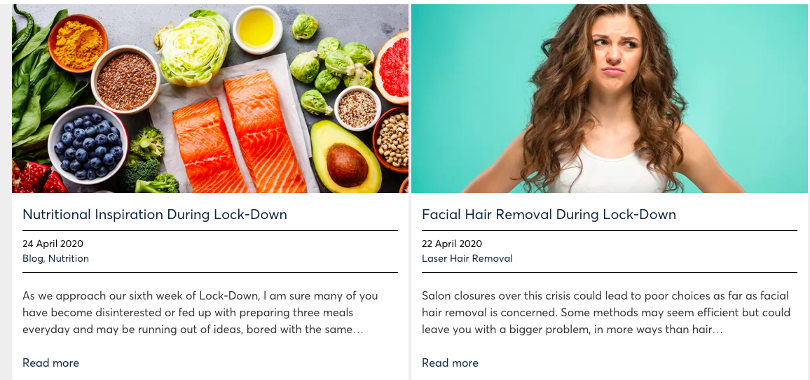
Context Advertising
A properly configured ad placed in search engines will bring you patients as soon as it is published. The exact ads shown depend on the keywords entered by the internet user. In context advertising, we work with the hottest topics and thus the very people who are searching for the services you offer. While optimising your ad campaign, it’s vital that you remove ineffective ads and disable unprofitable campaigns.
Advertising with Google Ads
Officially, Google Ads forbids the promotion of medical services but you can work your way around this with creative word usage:
- appointment
- consultation
- treatment
- treat
- Injections, vaccines
- diagnostics
- rehab
You can point out your clinic’s name, specialities, current discounts and emphasise the experience of your doctors.
Medical sites can be advertised via Google Ads on search results pages and in context media networks, i.e. on Google partner platforms and Google services. However, it is not permitted to post remarketing and ads in Gmail, nor to target ads according to interests, similar audiences, demographic or geographic criteria if you are using the following topics:
- Health issues (treatment of disease, chronic illness, disability, plastic surgery)
- Attracting volunteers for participation in clinical trials
- Prescription-only medication
- Delicate topics which remind users of their problems and life issues, e.g. their weight or appearance
It probably goes without saying, but try to avoid nudity in any images you use. If you have to use such images, make sure you include a disclaimer on your site.
How to Stay within Your Marketing Budget
To make the most out of your promotional opportunities, it’s important to keep an eye on your budget at all times. You need to be doing everything you can to stay cost-effective.
Here are some pointers to get you on the right track:
- Unlike other services you can book online, medical services are typically confined to a physical space. Patients don’t tend to want to travel far for the sake of visiting your clinic, so make sure you use geo-targeting specifically to attract local patients.
- Services like pregnancy and sports ultrasound are very competitive and usually have a low conversion rate which eats into your budget. Use your website to focus on services which have a lower level of competition.
- Include at least your town and county in your advertising text, if not your exact address.
- If you are working at the low to average price range in your speciality, display prices in your ads.
Crowd Marketing and Registering on Review Sites
When choosing a clinic, patients are influenced by your reputation, the cost of services, location, the professionalism of your doctors, their experience at the reception desk, and last but not least, reviews from other patients. If your clinic is new, it’s vital that you encourage your first patients to leave testimonials on review sites. The most popular review portals include:
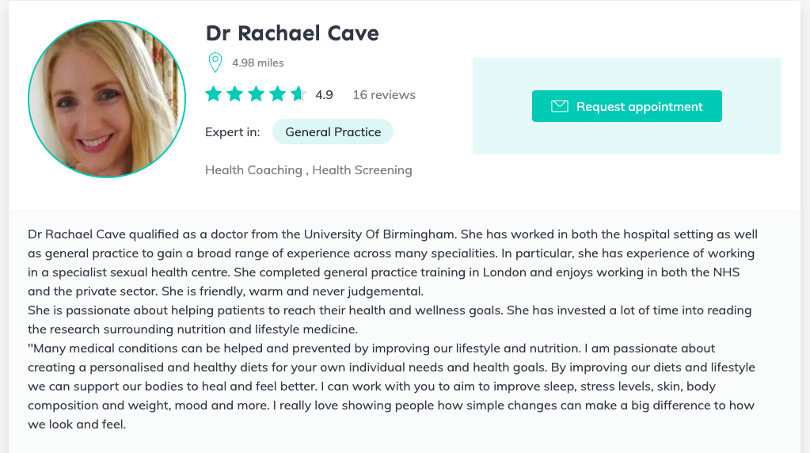
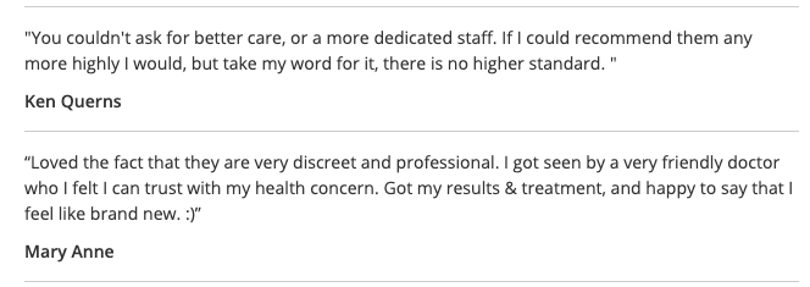
You can and really should also “plant” reviews yourself by asking patients for permission to post their comments on your profile. Remember that the chosen comments should be written in a mildly complimentary style that gives just enough detail to convince the reader. As long as this is all done in association with your clinic’s profile on a given site, then you have the opportunity to respond to feedback on behalf of your business. You can thank people for their kind words and react to negative comments in a timely manner. On that note, don’t get upset if you see reviews that are less than glowing. Such comments represent an opportunity to change things for the better. At the very least, you should ensure that no review is left without a proper response from your clinic. If criticism is justified in fact, then you need to take it upon yourself to fix your shortcomings and then publicise the measures your clinic took.
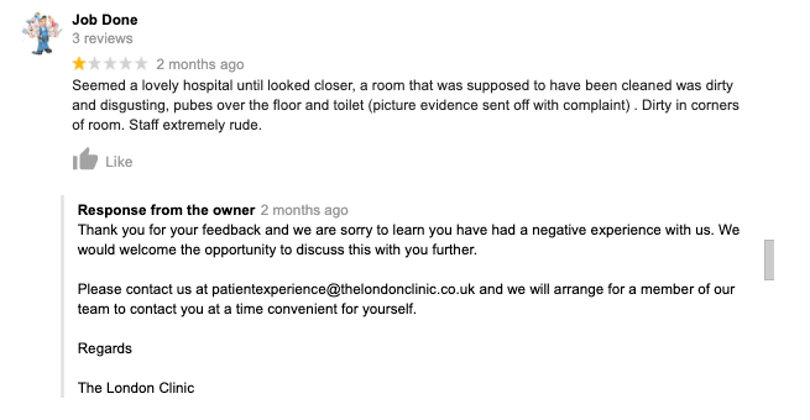
Businesses often get a good return on investment from recommendations made on question and answer sites. By providing a detailed response to a user’s query, you help them (and other users) to solve their problems while telling them about your clinic. The difficulty lies in the fact that you need to give a comprehensive response with links to sources and not just give out recommendations. That is to say, you must include links that direct people towards useful resources like Wikipedia rather than just to your website. It may also be to your advantage to mention in passing an inferior competitor (whether in service quality or cost).This promotional channel is known as crowd marketing and its effects can be huge. It works as follows:
- Register yourself on forums, recommendation portals, and question and answer sites.
- Leave a few answers on different topics unrelated to your niche. This is necessary to “warm up” your profile and make it appear more genuine.
- Search for topics and questions that discuss the doctors, clinics and medical services in your locality.
- Give detailed responses and include a link to your website. Answers should be written with as much empathy as possible.
- Repeat.
It can be worth having a few different profiles on the most popular platforms. Veterans of guerilla marketing often set up debates between their own accounts so as to make their answers look more convincing.
Email Marketing
“Urgh, more spam! Why are you even sending me this?!” A common response to newsletters but one that should be unfounded if you do things right. Email marketing is effective only when recipients have voluntarily subscribed to your newsletters. When recipients are site visitors, patients, doctors, business partners and whoever else is interested in what you have to say, it’s not spam at all. Your content should be engaging and possess value for its audience in and of itself. Emails can work as a good channel by which to release information about special offers and events, to re-acquire inactive patients, to remind patients about upcoming appointments and actions required from their side. All of these help you to increase your average revenue per appointment, but to hit each target, you need a specific strategy. To get the best results in general, you need to release content that interests your audience and regularly analyse parameters such as open rate and then adapt your approach accordingly.
Why your clinic needs email marketing:
- To advertise special offers and promotions that help to increase sales of services that you want to make more popular
- To bring back patients who you haven’t seen for some time as well as those who were planning on booking an appointment but haven’t got around to it yet
- To remind patients about checkups and increase revenue from returning patients
- To share interesting articles related to your services and your patients’ problems to increase the loyalty of existing patients and demonstrate your expertise to prospective patients
- To inform recipients about new equipment, clinicians with higher qualifications in additional specialities so that patients are more likely to book an appointment
It’s crucial that you realise that email marketing is not a one-time affair. To make this channel work, you need to release newsletters regularly then analyse the statistics and make changes to your content.

Messaging Platforms
It cannot be said that messengers are used for promoting your clinic, but they do help you to attract an audience. This is one of the most popular communication channels for use between businesses and customers as well as between individuals. By placing a live chat button on your website, you demonstrate the patient-oriented nature of your practice and your willingness to support people. However, if you do decide to add a live chat feature, make sure that your colleagues take responsibility for responding in a timely fashion. Ideally, you ought to reply within 15 minutes and set up a chatbot to handle out-of-hours enquiries. You can then provide ready-made responses to the most popular questions and gather contact details for use on the next workday.
Social Media
People usually only visit the doctor when they really need to. That is, interest in medical services is situational in nature so that once someone has already fallen ill, they aren’t going to put off booking an appointment for months. Prospective patients carefully consider service quality and a doctor’s qualifications when choosing a clinic. That’s why posts along the lines of “20% off MRIs until November 5th” don’t work whereas targeted ads do. The typical methods employed on social media by hairdressers and clothes stores simply don’t work in healthcare. In part, this is due to the strict regulations associated with the advertisement of medical services online.
Social media platforms are useful for clinics to gain trust, improve reputation and raise brand awareness among patients, both new and existing. That’s not to mention that it’s much quicker to communicate with your audience on social media. Prospective patients can ask questions and receive a response much faster than if they were to use email. You should create groups according to interests on social media and internet forums so you can publish useful information for people to educate themselves, whether by getting an answer to their questions or advice on how to solve their health issues.

Information about your clinic should be appropriate and not obtrusive. Tell people about your clinicians, answer questions, publish medical news, and ask your doctors to work on their personal profiles. After all, many patients choose by the doctor, not by the clinic.Facebook and Instagram are two of the main social media platforms through which you can promote your clinic. You can also look into using Twitter and LinkedIn, although they may be less effective.
Targeted Ads
Targeted advertising works via social media. It is a promotional tool that allows you to show specific ad campaigns to certain people based on their gender, age, location, socioeconomic status, marital status, and interests.
Unlike context ads which tend to work in the case of high demand, targeted ads capture those who might be interested in your services based on hypotheses proposed by marketing specialists.
The main difficulty in setting up targeted ads lies in defining which audience to search for in the first place. No clinic is exactly like any other, and it’s clear the target audience belonging to a plastic surgeon is going to be different from that of a GP. Nevertheless, there are some general trends that can be relied upon, such as the observation that the people most likely to click an medically-themed advertisement are women over 30. In contrast, men of all ages tend to put off treatment until the last minute and so are much less likely to click a medical ad.
Target, amongst others:
- Those belonging to particular social media groups and competitors’ pages;
- Those with a clear interest in health;
- Geographic regions.

Social Media Optimization (SMO)
Social Media Optimization usually implies the optimization of a website for social media purposes. For example, it could include the addition of social media buttons, links, comments and so on. However, we are going to dig into this topic in more depth. SMO helps you to unite the offline and online worlds to bring people over from the physical to the digital space, where it’s easier for you to stay connected. For a given group of people, you can set up ads, send newsletters, run a blog, and receive reviews that will be read by other such people.
Do the following to unite these two worlds:
- Place QR codes and shortened links to your social media pages in and around your clinic where they would be easily noticed. Come up with a call to action so people understand why they should visit your pages or subscribe to your content.
- Display your clinic’s online ratings at the reception desk and entrance to boost trust in existing patients and interest in those passing by outside.
- Think up unique hashtags for your promotional campaigns and offers and let patients know so they can take advantage.
- Ask patients to leave reviews on popular websites and to include links to your website or other material. You can incentivize them if appropriate to do so by offering lower prices.
The most crucial aspects of your SMO are having a good call to action, appropriate placement of information on social media and review sites, and using shortened links.
Put Your Patients First
None of the tools outlined above is going to be effective if there’s no one to answer emails and calls, receptionists are impolite, your premises are unhygienic, or your clinicians are always trying to push unnecessary extra treatments on their patients.
A patient-focused approach in itself works as an effective acquisition channel because word of mouth remains a vital driver of your clinic’s popularity.
The courteousness of your receptionists, professionalism and tact of your clinicians, and your rapid response to patient feedback will all do more to attract additional patients to your clinic than any amount of SEO.
You ought to listen to call recordings and track the number of missed calls. Clinics often lose out on opportunities to attract new patients and retain existing ones due to issues with receptionists and call handling software.
To understand in real-time which promotional tools work and which don’t, it’s crucial that you have access to relevant data on the effectiveness of each of the points above. All clinics should employ a flexible practice management system that can integrate with call tracking, end-to-end analytics solutions like Google Analytics. It’s the only way to know for sure what attracted your patients to your clinic, whether it was a context ad, social media post, or a recommendation from a referral partner.

Checklist – The Main Patient Acquisition Tools Your Clinic Needs
- Familiarize yourself with the main rules and regulations surrounding medical advertising
- Develop a promotional strategy for your clinic based on existing goals
- Carry out an audit of your website to see how user-friendly and attractive it is for patients
- Set up promotional tools on search engines
- Speak with your colleagues and ask them to write a blog article on your clinic website on a weekly basis
- Configure context ads on Google Ads
- Register yourself on review portals, write and respond to comments, react to negative feedback
- Set up newsletters to send out to certain groups of potential and existing patients. Inform them of special offers, discounts etc.
- Create groups on social media sites where you can place interesting content, generate discussion and attach your online booking link
- Configure targeted ads to match the subgroup of the population you want to attract
- Continuously improve your service quality as word of mouth remains one of the most effective channels of patient acquisition




